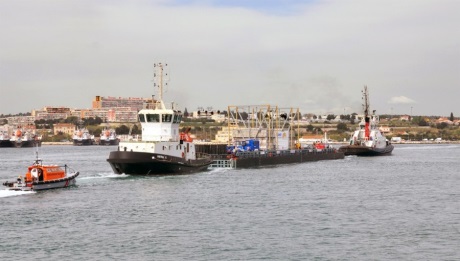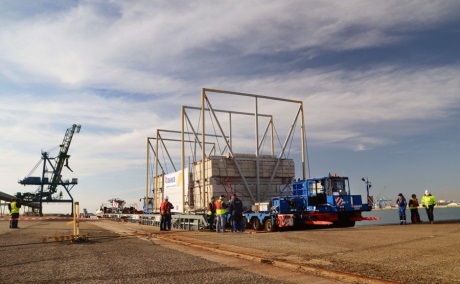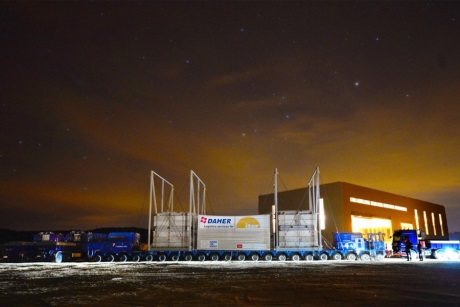A 600-tonne dummy load has completed a journey by land and water to test out the logistics of transporting major components to the Iter fusion reactor site in southern France.
 |
| The load was carried by barge for part of its journey (Image: Iter) |
Major components for Iter's tokamak are being manufactured in various locations around the world by the international project's partners, and need to be shipped to the construction site at Cadarache. Some of those components will weigh up to 600 tonnes.
These components will arrive via the Mediterranean Sea at Fos-sur-Mer in France. Their onward journey takes them along the Canal de Caronte and across a large lake, L'Etang de Berre, before transfer by road to Cadarache. The test convoy is the second, and last, dry run before the transport of Iter components begins in earnest later this year.
 |
| The dummy cargo is unloaded from the barge to continue its journey by road (Image: Iter) |
The Iter route is known as the Iter Itinerary. The heaviest convoy that will travel along it will weigh 800 tonnes (including the transport vehicle), and loads can be up to be 10.4 metres high, the longest 33 metres, and the widest 9 metres. To prepare for such exceptional convoys, a three-year program of French-funded large-scale public works has already been completed along the 104 km road route to widen roads, reinforce bridges and modify intersections.
Iter transports, which can only be conducted at night to minimise disruption, are carried out by the project's global logistics provider, Daher. The company is using a specially adapted self-propelled trailer, weighing in at 200 tonnes, to carry the oversized Iter components. With 88 axles and 352 tyres, the trailer has a driver cab and engine at each end.
 |
| The load arrives at the Cadarache site (Image: Iter) |
Requiring a combination of barge and heavy-lift pontoon, the maritime portion of the test convoy saw the trailer and its load carried from the port of Fos-sur-Mer to the port of Berre L'Etang, and was completed on 1 April. The convoy's onward journey was scheduled to take place over the next three nights, but technical issues with the trailer's hydraulic system meant that the journey was instead completed over four nights, with no transport taking place over the weekend.
A first test convoy was carried out last September but was unable to include the 26 km crossing of L'Etang de Berre as the special barge needed to ferry the trailer and its 600-tonne dummy load had been stranded in Turkey by adverse weather conditions.
Researched and written
by World Nuclear News





_18570.jpg)
_16159.jpg)
_18938.jpg)
_33584.jpg)





